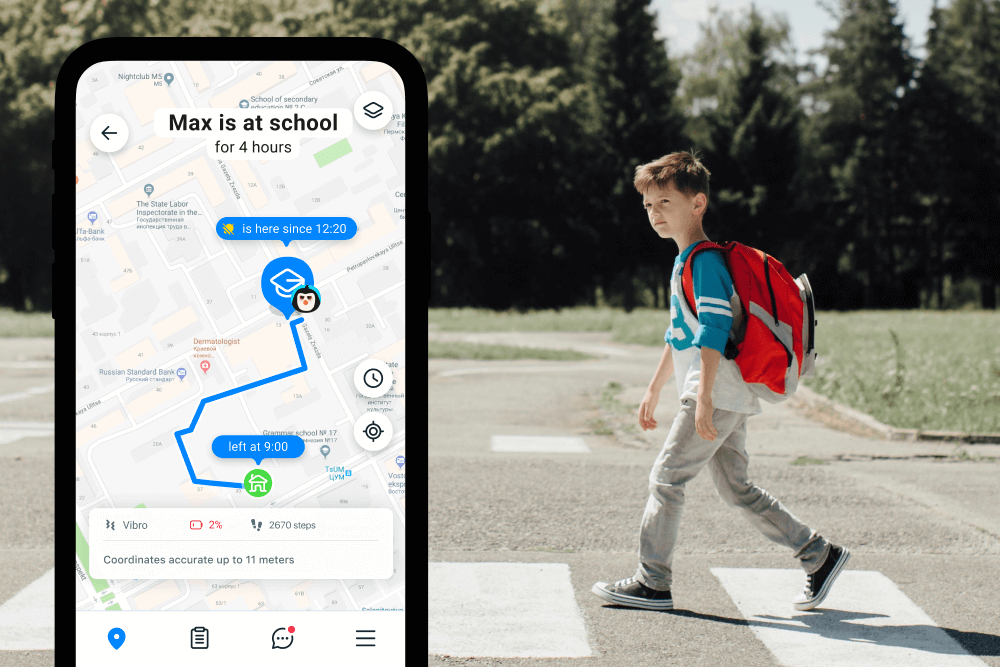Stranger Danger Rules for Parents and Kids
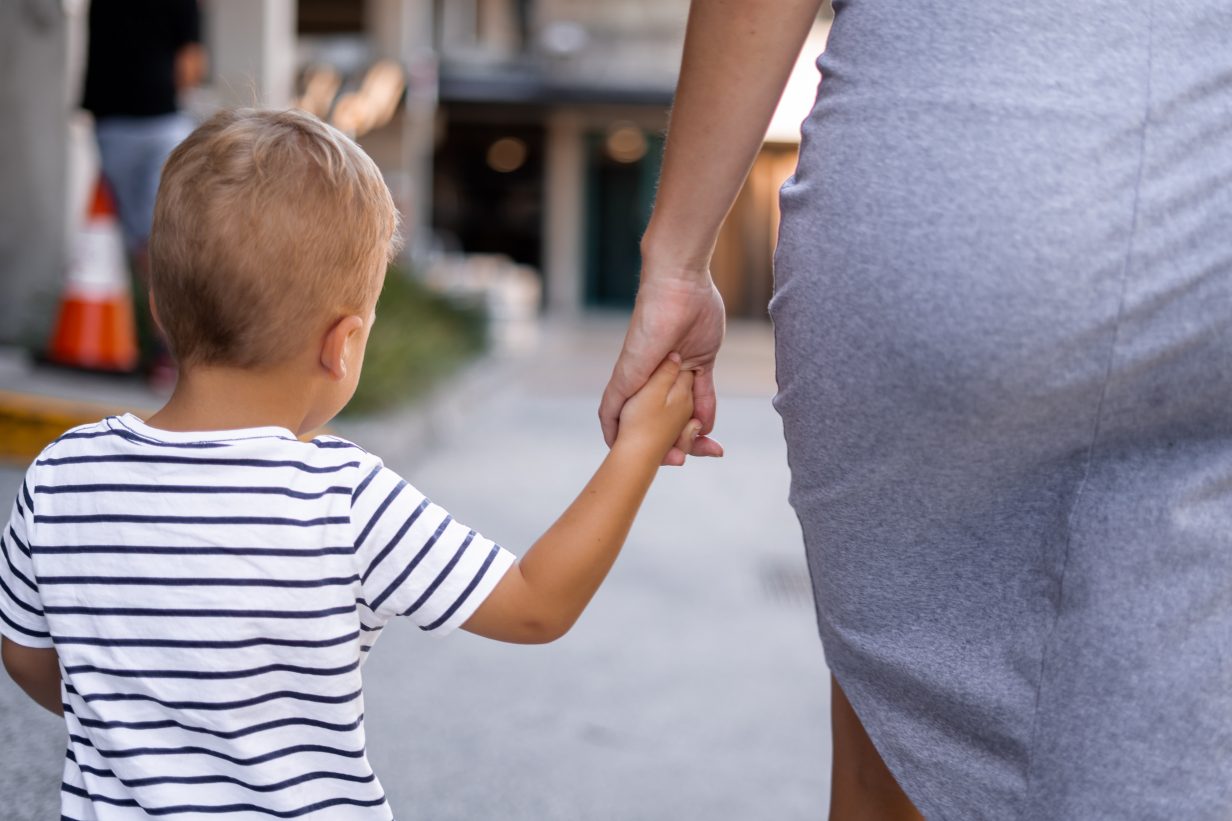
Parents are always teaching children not to trust strangers. What are the best methods of keeping them safe from strangers?
Here are some things parents can do to get more peace of mind and teach their children how to stay safe from strangers.
Contents:
- Talking about Strangers: Common Advice and Rules
- A Talking To Strangers Guideline by Age Group
- How Bad Strangers Manipulate Children
- How to Protect Your Children from Kidnappers and Predators
- Common Behavior Tips About Strangers That Many Children Don’t Know
- What Else Could You Do to Keep Your Children Safe? Install the Findmykids App!
Talking about Strangers: Common Advice and Rules
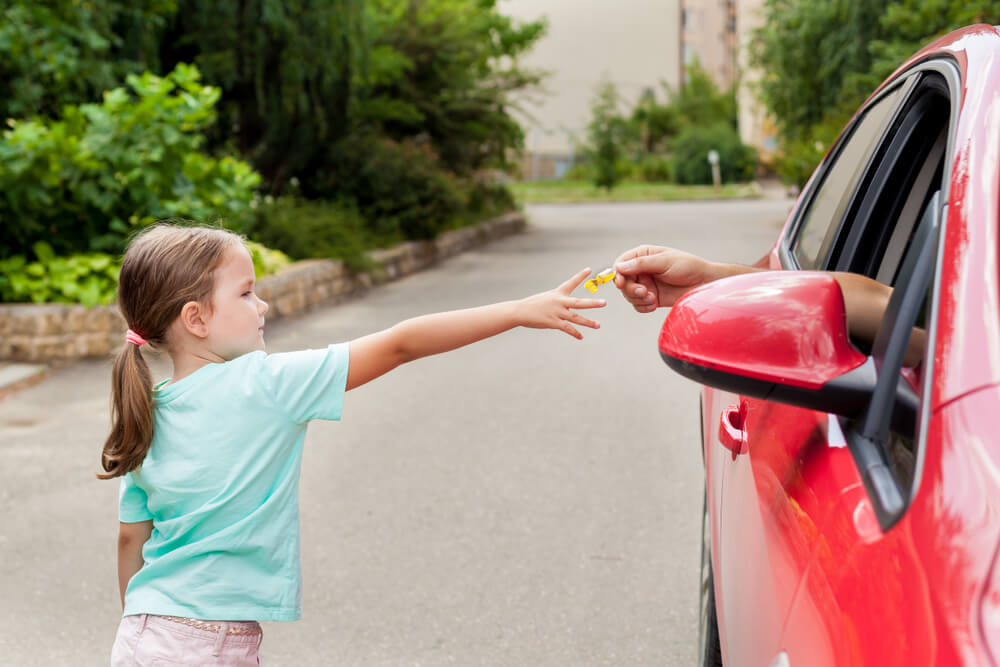
Prostock-studio/Shutterstock.com
When teaching your children about staying safe from strangers, it’s important to give them strategies and resources.
General Safety Rules to Teach Your Child
- Remember to be SMART —“Safety Means Always Recognizing Trouble” – be aware of what is going on around you.
- When you feel that something is not right, do not hesitate to ask for help.
- If a person whom you don’t know offers you a ride or a gift, always say “no.”
- If someone makes you feel unsafe, get someone’s attention by saying loudly “Help!” or “I don’t know you.”
- Always know a safe zone along your usual routes and places—keep a list or map of safe zones, or designated safe places, and routes. Examples are schools, police stations, shops, or a friend’s house.
- Choose a safe word with your parents. If they send anyone to you, the person should know the safe word.
- Always stay with your parents, family, or parents—never walk off alone.
- When walking outside, be aware of people and cars near you.
- Wait for a ride or the bus around other people.
- If a car or person slows down and follows you, walk quickly to a safe spot.
- If a person stops you to ask something, take three steps back. If you feel uncomfortable, walk away.
- Never approach strangers sitting in a car.
- Never get into a car with a stranger.
- Always play where your parents can see you.
- Do not go near or talk to a stranger who comes into your yard.
- When someone knocks or rings the doorbell, do not open the door—get a parent to open it.
- When you’re home alone, only open the door to people you know and trust.
- When on the phone, do not give any personal information like your name and address. Don’t tell anybody you are home alone.
- If someone you don’t know calls, give the phone to your parents.
- Do not take the person’s word that they are who they say they are—police, utility company, a repairman—or was sent by your parents (unless they know your safe word).
If your child has a mobile phone, install a tracking app that you can use when needed. Add important numbers to their contacts list but also have them memorize your number and emergency numbers.
When on the Internet
- Do not communicate with strangers on social media or messaging apps.
- Do not give personal information like your name and address to strangers.
- Do not tell anyone when you are home alone.
- Do not trust what a stranger tells you.
- Never agree to meet a stranger in person, even if you believe they are honest.
Read more: Internet Safety Tips for Kids & Must-Have Rules for Every Parent.
These tips and rules are meant to keep your child as safe as possible without being too restrictive.
A Talking To Strangers Guideline by Age Group

Snow White and the Seven Dwarfs 0+, 1937
In addition to the tips and rules above, your child needs to know that some strangers do “bad” things that can hurt a child. It does not matter how they look, how old they are, or what clothes or uniforms they wear. They should not trust any stranger.
A great tool for educating children about stranger danger is through storytelling.
For instance, take the classic story of Little Red Riding Hood.
In Little Red Riding Hood, the wolf disguises itself as Red’s grandmother, a kind, harmless, and trustworthy person.
This is a very important lesson for children. It shows them that danger can be treacherous and deceptive.
Another great story is Snow White. It teaches children how dangerous it can be to accept gifts from strangers, no matter how tasty or shiny they may be.
Tell your kids these stories often to make them aware of stranger danger. That will be much more effective in teaching your children how to look after themselves than any lecture ever will.
Stranger Danger for Preschoolers
For preschool children, a story and tips must be visual, simple, and relate directly to their experiences. You should not be abstract or hypothetical.
By the preschool development phase, most children have formed trust for his or her caregivers and a sound instinct of danger and mistrust of others. They have also developed a sense of personal control and like to test their independence which bolsters their willingness to take initiative.
These typical tendencies must guide the parent to make sure that the preschooler understands that people are different and not everyone can be trusted. While people are not born “bad,” sometimes, when they are hurt as a child, they want to hurt others when they get older. That is why staying safe is even more important for the psychological well-being of your child and your household.
Stranger Danger for Elementary Schoolers
During the early school years, social interactions increase, and children start to develop a sense of pride and confidence.
Elementary school children think more logically about things that have happened or could happen to them. They can reason, such as taking specific information to form general rules. This ability is helpful when talking about safety. An example is to take a situation where they did not feel safe and discuss what they could or should have done to stay out of trouble. Make the information as practical and relatable as possible.
Using quizzes, activities, and stories elementary schoolers can learn different ways strangers can harm them in a dangerous situation.
Stranger Danger for Teenagers
Teenagers develop a sense of personal identity, which is the beliefs, ideals, and values that guide their behavior. They understand more about society’s rules and expectations and explore their independence and control within these boundaries, which they can test at times as well.
The parent can discuss real events with their teenage child and hypothesize about their implications, choices, and different outcomes. Maintaining an appropriate balance between their autonomy and vigilance is more important than before.
How Bad Strangers Manipulate Children

Prostock-studio/Shutterstock.com
Predators can be patient and groom children over time, progressively making them trust them, often distancing them from their parents, swearing them to secrecy, and exploiting their need to be accepted.
- They are gentle, kind, and relatable. Kidnappers and criminals don’t always look sneaky, suspicious, or dangerous. They go to great lengths to appear just like nice and respectable people. To the child’s eye, they are exactly what a friendly and trustworthy adult would look like.
- They know a lot about children and how to quickly earn their trust. In the video above, the “kidnapper” uses a cute puppy to catch the children’s attention. He approaches the children very cautiously so as not to alarm them. After they’ve pet the dog he engages them in conversation by asking them to guess the puppy’s name.
- They exploit our weaknesses as a parent. Kidnappers and criminals also know a lot about parents. They know how they think. They can understand when they’re relaxed with our guard down, or when they’re tense and alert. These predators take advantage of parents’ weaknesses by targeting children in places where parents think they’re safest — such as in a playground.
The “Good” Strangers
When one thinks about “good” strangers, some professions immediately come. Policemen, nurses, doctors, teachers, and churchmen are typical examples.
Your child should understand context, namely, where to expect policemen, priests, nurses, and so forth. Anyone stopping, approaching, or making them feel uncomfortable, should not be trusted, whether they wear a uniform or not.
How to Protect Your Children from Kidnappers and Predators
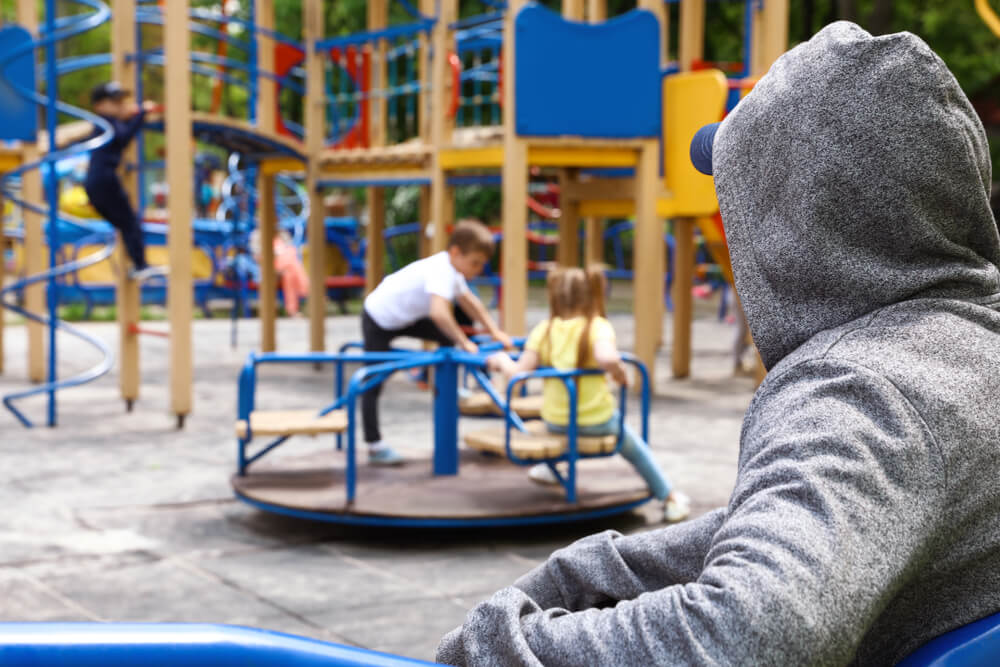
New Africa/Shutterstock.com
So, apart from telling our children to stay away from strangers, what more can we do?
Stranger danger education is crucial, but we can’t depend on it exclusively.
Here are a few things you can do to protect your children from kidnappers and predators.
1. Dress them in highly visible and easily recognizable clothes
Dress your child in bright t-shirts, pants, and colored caps. The more attention-grabbing, the better.
Remember, predators go for easy prey. They will pick a child who is harder to spot and blends in. They’ll target quieter children because they’re less likely to make a scene if approached.
2. Team up
Team up with other parents to keep a watchful eye on your children.
If your child is playing with other children at the playground, identify the parents and strike up a friendly conversation. Now, there’s more than just one pair of eyes keeping watch over the children.
3. Be observant and keep a watchful eye
Children are more likely to engage with strangers online, believing the false personas that they portray.
according to the National Center for Education Statistics, 97% of children between the ages of three and 18 years old had access to the internet in 2021.
Parents should be aware of the potential dangers online and take precautions to prevent dangerous situations for their children while scrolling the Internet:
- Threat — Inappropriate content. Decision — Parental control, Monitor.
- Threat — Device addiction. Decision — Limit screen time with the Kids360 app.
- Threat — Inappropriate apps. Decision — Account linking, Monitoring.
- Threat — Social media. Decision — Restrict access until older, Account access, Monitoring.
- Threat — Oversharing. Decision — Monitoring, Educating about the threat.
- Threat — Kids are innocent and naïve. Decision — Restrict access until older.
4. Stop playing at a disadvantage
Widespread usage of technology has transformed how adults and kids perceive and manage risk.
Nowadays, kidnappers are very well-equipped. They use cameras, surveillance tools, the internet, and any equipment available to their advantage.
When competing against such a well-equipped and devious threat, your eyes and ears will never be enough. You need to level the playing field and get technology on your side.
That’s where Findmykids comes in handy, a GPS-tracking app that helps keep your children safe and gives you peace of mind.
It’s crucial to recognize the signs when a stranger makes your child uncomfortable. Read also How to Spot a Pedophile: Warning Signs.
Common Behavior Tips About Strangers That Many Children Don’t Know
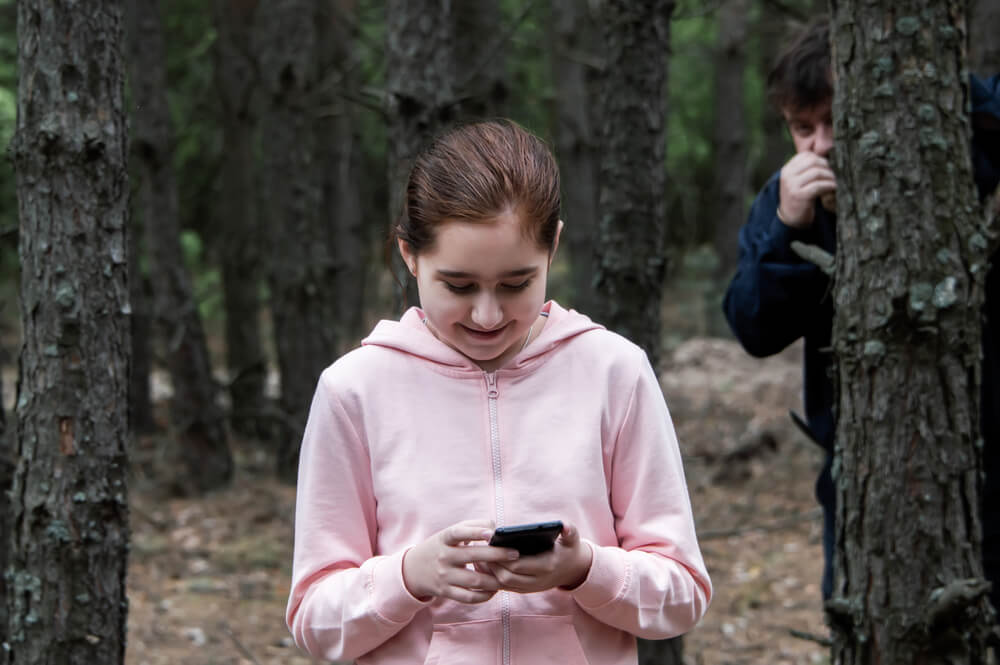
Valeriya Popova 22/Shutterstock.com
Here are a few frequently asked questions about strangers and how to act when feeling threatened.
What is a Stranger? Missing and exploited children statistic
The simple answer is that a stranger is anyone that you don’t know. Whether you come across them in person or online does not make a difference. They can look friendly and harmless but be deceiving children with bad intentions. Unless you need help and go to a safe zone, never trust a stranger.
Strangers are a direct harm to children if not properly educated and informed. Child abductions are every parent’s worst nightmare, and unfortunately, they have been reported in different regions, indicating their widespread occurrence. In 2022, the FBI recorded 359,094 missing children in the United States alone.
How can you avoid stranger danger?
Understanding the different situations that may lead to stranger danger is vital for safeguarding our children. Teach them to:
- Do not accept anything like gifts, car rides, or treats from a stranger.
- Run away from the stranger or get your parents if you feel scared or uncomfortable.
- Do not accept the friendship of a stranger online.
- Do not tell a stranger any of your personal information like your name and address.
- Always let your parents know where you are going.
How can a stranger hurt you online?
Strangers who reach out to a child online are often not who they portray to be. They make you feel comfortable enough that you agree to meet them alone without your friends or parents to protect you.
If you get lost, what should you do?
If you get lost or separated from your parents or friends, go to the nearest safe zone quickly. Ask someone there to call your parents or the police if needed.
What should you do if someone grabs you (but a trusted adult isn’t around)?
Yell to attract attention. Try to wrestle free and run away if you can. Let people know loudly that you don’t know the person who grabbed you.
If someone makes you feel uncomfortable, what should you do?
Move away as quickly as possible. Go to a safe place. Tell your parents.
What Else Could You Do to Keep Your Children Safe? Install the Findmykids App!
There are many features and apps online to help you monitor and safeguard your children by limiting and tracking their activities and movements. One such application is Findmykids.
How Findmykids helps you keep your children safe?
Findmykids uses the internet, telephony, and GPS technology to give you peace of mind and keep your child safe.
GPS-Tracking and Safe Zone alerts
Through the use of GPS technology and the mobile data network, you can track your child’s location in real-time, anytime.
You can also designate “safe zones” in the app. If your child moves out of the specified area, such as a playground or school, your app will notify you right away.
Observe and listen to your child’s surroundings
The app uses the camera and microphone of your child’s mobile device to allow you to monitor their surroundings at any time.
This comes in handy when you’re with your child at a playground and you want to relax, rather than strain your eyes and neck to watch your child. Activate the sound monitoring feature on the app, pop your headphones on, and listen to your child’s surroundings. If they stop playing and start having a conversation with a stranger, that’s your cue to go to them.
A dedicated emergency button
Dangerous encounters often happen quickly. Once a child is snatched, it’s almost too late to act.
Teach your child to scream loudly if they find themselves in danger. But what if the kidnapper is covering their mouth or they’re out of earshot?
The Findmykids app equips your child’s mobile device or smartwatch with a dedicated Alarm Button. Pushing the alarm button will alert the parent app, letting you know that your child is in danger.
Ensure your child’s safety with the Findmykids app, a trusted tool found widespread usage among parents. Download it now to stay informed and protect your little ones from potential risks. Your child’s safety is our priority!
This brings us to the end of our comprehensive guide on how to talk to your kids about strangers.
You can’t always control what happens, but you can do a lot to prevent your child from becoming an easy target. These simple ideas and interventions are sometimes overlooked but are the easiest to understand and follow.
Проверьте электронный ящик














